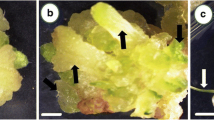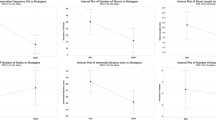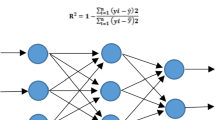Abstract
Plant callus is generally considered to be a mass of undifferentiated cells and can be used for secondary metabolite production, physiological studies, and plant transformation/regeneration. However, there are several types of callus with different morphological and developmental characteristics and not all are suitable for all applications. Callogenesis is a multivariable developmental process affected by several intrinsic and extrinsic factors, but the most important driver is plant growth regulator (PGRs) levels and type. Since callogenesis is a non-linear process influenced by many different factors, robust computational methods such as machine learning algorithms have great potential to model, predict, and optimize callus growth and development. The current study was conducted to evaluate the effect of PGRs on callus morphology in drug-type Cannabis sativa to maximize callus growth and promote embryogenic callus production. For this aim, random forest (RF) and support vector machine (SVM) were applied in conjunction with image processing to model and predict callus morphological and physical traits. The results showed that SVM was more accurate than RF. In order to find the optimal level of PGRs for optimizing callus growth and development, the SVM was linked to a genetic algorithm (GA). To confirm the reliability of SVM-GA, the optimized-predicted outcomes were tested in a validation experiment that revealed SVM-GA was able to accurately model and optimize the system. Moreover, our results showed that there is a significant correlation between embryogenic callus production and the true density of callus.
Key points
• The effect of PGRs on callus growth and development of cannabis was studied.
• The predictive accuracy of SVM and RF was evaluated and compared.
• GA was linked to the SVM for optimizing the callus growth and development.



Similar content being viewed by others
Data availability
All processed data are available without restriction upon inquiry.
References
Boonsnongcheep P, Pongkitwitoon B (2020) Factors affecting micropropagation of Cannabis sativa L.: a review. Pharm Sci Asia 47(1):21–29. https://doi.org/10.29090/psa.2020.01.019.0030
Breiman L (2001) Random Forests. Mach Learn 45(1):5–32. https://doi.org/10.1023/A:1010933404324
Chandran H, Meena M, Barupal T, Sharma K (2020) Plant tissue culture as a perpetual source for production of industrially important bioactive compounds. Biotechnol Rep 26:e00450. https://doi.org/10.1016/j.btre.2020.e00450
Dasgupta A, Bakshi A, Chowdhury N, De RK (2021) A control theoretic three timescale model for analyzing energy management in mammalian cancer cells. Comput Struct Biotechnol J 19:477–508. https://doi.org/10.1016/j.csbj.2020.12.019
Downey CD, Zoń J, Jones AMP (2019) Improving callus regeneration of Miscanthus × giganteus J.M.Greef, Deuter ex Hodk., Renvoize ‘M161’ callus by inhibition of the phenylpropanoid biosynthetic pathway. In Vitro Cell Dev Biol Plant 55(1):109–120. https://doi.org/10.1007/s11627-018-09957-z
Dutta Gupta S, Pattanayak AK (2017) Intelligent image analysis (IIA) using artificial neural network (ANN) for non-invasive estimation of chlorophyll content in micropropagated plants of potato. In Vitro Cell Dev Biol Plant 53(6):520–526. https://doi.org/10.1007/s11627-017-9825-6
Efferth T (2019) Biotechnology applications of plant callus cultures. Engineering 5(1):50–59. https://doi.org/10.1016/j.eng.2018.11.006
Farhadi S, Salehi M, Moieni A, Safaie N, Sabet MS (2020) Modeling of paclitaxel biosynthesis elicitation in Corylus avellana cell culture using adaptive neuro-fuzzy inference system-genetic algorithm (ANFIS-GA) and multiple regression methods. PLoS One 15(8):e0237478. https://doi.org/10.1371/journal.pone.0237478
Flores-Sanchez IJ, Peč J, Fei J, Choi YH, Dušek J, Verpoorte R (2009) Elicitation studies in cell suspension cultures of Cannabis sativa L. Aust J Biotechnol 143(2):157–168. https://doi.org/10.1016/j.jbiotec.2009.05.006
Friedrichs A, Busch JA, Van der Woerd HJ, Zielinski O (2017) SmartFluo: a method and affordable adapter to measure chlorophyll a fluorescence with smartphones. Sensors 17(4):678. https://doi.org/10.3390/s17040678
Gamborg OL, Miller RA, Ojima K (1968) Nutrient requirements of suspension cultures of soybean root cells. Exp Cell Res 50(1):151–158. https://doi.org/10.1016/0014-4827(68)90403-5
Hesami M, Daneshvar MH (2018) In vitro adventitious shoot regeneration through direct and indirect organogenesis from seedling-derived hypocotyl segments of Ficus religiosa l.: an important medicinal plant. HortScience 53(1):55–61. https://doi.org/10.21273/HORTSCI12637-17
Hesami M, Jones AMP (2020) Application of artificial intelligence models and optimization algorithms in plant cell and tissue culture. Appl Microbiol Biotechnol 104:9449–9485. https://doi.org/10.1007/s00253-020-10888-2
Hesami M, Naderi R, Tohidfar M (2019a) Modeling and optimizing medium composition for shoot regeneration of chrysanthemum via radial basis function-non-dominated sorting genetic algorithm-II (RBF-NSGAII). Sci Rep 9(1):18237. https://doi.org/10.1038/s41598-019-54257-0
Hesami M, Naderi R, Tohidfar M, Yoosefzadeh-Najafabadi M (2019b) Application of adaptive neuro-fuzzy inference system-non-dominated sorting genetic algorithm-II (ANFIS-NSGAII) for modeling and optimizing somatic embryogenesis of chrysanthemum. Front Plant Sci 10(869). https://doi.org/10.3389/fpls.2019.00869
Hesami M, Naderi R, Tohidfar M (2020a) Introducing a hybrid artificial intelligence method for high-throughput modeling and optimizing plant tissue culture processes: the establishment of a new embryogenesis medium for chrysanthemum, as a case study. Appl Microbiol Biotechnol 104(23):10249–10263. https://doi.org/10.1007/s00253-020-10978-1
Hesami M, Naderi R, Tohidfar M, Yoosefzadeh-Najafabadi M (2020b) Development of support vector machine-based model and comparative analysis with artificial neural network for modeling the plant tissue culture procedures: effect of plant growth regulators on somatic embryogenesis of chrysanthemum, as a case study. Plant Methods 16(1):112. https://doi.org/10.1186/s13007-020-00655-9
Hesami M, Pepe M, Alizadeh M, Rakei A, Baiton A, Phineas Jones AM (2020c) Recent advances in cannabis biotechnology. Ind Crop Prod 158:113026. https://doi.org/10.1016/j.indcrop.2020.113026
Jiménez VM (2005) Involvement of plant hormones and plant growth regulators on in vitro somatic embryogenesis. Plant Growth Regul 47(2):91–110. https://doi.org/10.1007/s10725-005-3478-x
Krasteva G, Georgiev V, Pavlov A (2020) Recent applications of plant cell culture technology in cosmetics and foods. Eng Life Sci 21:68–76. https://doi.org/10.1002/elsc.202000078
Lata H, Chandra S, Khan IA, ElSohly MA (2010) High frequency plant regeneration from leaf derived callus of high δ9-tetrahydrocannabinol yielding Cannabis sativa L. Planta Med 76(14):1629–1633. https://doi.org/10.1055/s-0030-1249773
Mahvash Mohammadi N, Hezarkhani A (2020) A comparative study of SVM and RF methods for classification of alteration zones using remotely sensed data. J Mining Environ 11(1):49–61. https://doi.org/10.22044/jme.2019.7956.1664
Mansouri A, Fadavi A, Mortazavian SMM (2015) Effects of length and position of hypocotyl explants on Cuminum cyminum L. callogensis by image processing analysis. Plant Cell Tissue Organ Cult 121(3):657–666. https://doi.org/10.1007/s11240-015-0736-0
MATLAB (2018) 2018,9.7.0.1190202 (R2019b). The MathWorks Inc., Natick, Massachusetts
Mohan PJ, Gupta SD (2019) Intelligent image analysis for retrieval of leaf chlorophyll content of rice from digital images of smartphone under natural light. Photosynthetica 57(2):388–398. https://doi.org/10.32615/ps.2019.046
Monthony AS, Kyne ST, Grainger CM, Jones AMP (2020) Recalcitrance of Cannabis sativa to de novo regeneration; a multi-genotype replication study. bioRxiv 2020.2006.2023.167478. https://doi.org/10.1101/2020.06.23.167478
Monthony AS, Page SRG, Hesami M, Jones AMP (2021) The past, present and future of Cannabis sativa tissue culture. Plants 10(1):185. https://doi.org/10.3390/plants10010185
Movahedi M, Ghasemi Omran V, Torabi S (2015) The effect of different concentrations of TDZ and BA on in vitro regeneration of iranian cannabis (Cannabis sativa) using cotyledon and epicotyl explants. J Plant Mol Breed 3(2):20–27. https://doi.org/10.22058/jpmb.2015.15371
Murashige T, Skoog F (1962) A revised medium for rapid growth and bio assays with tobacco tissue cultures. Physiol Plant 15(3):473–497. https://doi.org/10.1111/j.1399-3054.1962.tb08052.x
Niazian M, Niedbała G (2020) Machine learning for plant breeding and biotechnology. Agriculture 10(10):436. https://doi.org/10.3390/agriculture10100436
Niazian M, Sadat-Noori SA, Abdipour M, Tohidfar M, Mortazavian SMM (2018) Image processing and artificial neural network-based models to measure and predict physical properties of embryogenic callus and number of somatic embryos in ajowan (Trachyspermum ammi (L.) Sprague). In Vitro Cell Dev Biol Plant 54(1):54–68. https://doi.org/10.1007/s11627-017-9877-7
Niazian M, Shariatpanahi ME, Abdipour M, Oroojloo M (2019) Modeling callus induction and regeneration in an anther culture of tomato (Lycopersicon esculentum L.) using image processing and artificial neural network method. Protoplasma 256(5):1317–1332. https://doi.org/10.1007/s00709-019-01379-x
Page SRG, Monthony AS, Jones AMP (2021) DKW basal salts improve micropropagation and callogenesis compared to MS basal salts in multiple commercial cultivars of Cannabis sativa. Botany 99:179–279. https://doi.org/10.1139/cjb-2020-0179
R Core T (2020) R: A language and environment for statistical computing. R Foundation for Statistical Computing, Vienna, Austria
Rasband W (1997) ImageJ. US National Institutes of Health, Bethesda, MD.
Saberioon M, Císař P, Labbé L, Souček P, Pelissier P, Kerneis T (2018) Comparative performance analysis of support vector machine, random forest, logistic regression and k-nearest neighbours in rainbow trout (Oncorhynchus mykiss) classification using image-based features. Sensors 18(4):1027. https://doi.org/10.3390/s18041027
Salehi M, Farhadi S, Moieni A, Safaie N, Ahmadi H (2020) Mathematical modeling of growth and paclitaxel biosynthesis in Corylus avellana cell culture responding to fungal elicitors using multilayer perceptron-genetic algorithm. Front Plant Sci 11:1148. https://doi.org/10.3389/fpls.2020.01148
Salehi M, Farhadi S, Moieni A, Safaie N, Hesami M (2021) A hybrid model based on general regression neural network and fruit fly optimization algorithm for forecasting and optimizing paclitaxel biosynthesis in Corylus avellana cell culture. Plant Methods 17(1):13. https://doi.org/10.1186/s13007-021-00714-9
Sari PA, Suhatril M, Osman N, Mu’azu MA, Dehghani H, Sedghi Y, Safa M, Hasanipanah M, Wakil K, Khorami M, Djuric S (2019) An intelligent based-model role to simulate the factor of safe slope by support vector regression. Eng Comput 35(4):1521–1531. https://doi.org/10.1007/s00366-018-0677-4
Sheykhmousa M, Mahdianpari M, Ghanbari H, Mohammadimanesh F, Ghamisi P, Homayouni S (2020) Support vector machine versus random forest for remote sensing image classification: a meta-analysis and systematic review. IEEE J Sel Top Appl Earth Obs Remote Sens 13:6308–6325. https://doi.org/10.1109/JSTARS.2020.3026724
Shirzad A, Tabesh M, Farmani R (2014) A comparison between performance of support vector regression and artificial neural network in prediction of pipe burst rate in water distribution networks. KSCE J Civ Eng 18(4):941–948. https://doi.org/10.1007/s12205-014-0537-8
Slusarkiewicz-Jarzina A, Ponitka A, Kaczmarek Z (2005) Influence of cultivar, explant source and plant growth regulator on callus induction and plant regeneration of Cannabis sativa L. Acta Biol Cracov Ser Bot 47(2):145–151
Smýkalová I, Vrbová M, Cvečková M, Plačková L, Žukauskaitė A, Zatloukal M, Hrdlička J, Plíhalová L, Doležal K, Griga M (2019) The effects of novel synthetic cytokinin derivatives and endogenous cytokinins on the in vitro growth responses of hemp (Cannabis sativa L.) explants. Plant Cell Tissue Organ Cult 139(2):381–394. https://doi.org/10.1007/s11240-019-01693-5
Vesali F, Omid M, Mobli H, Kaleita A (2017) Feasibility of using smart phones to estimate chlorophyll content in corn plants. Photosynthetica 55(4):603–610. https://doi.org/10.1007/s11099-016-0677-9
Wei T, Simko V, Levy M, Xie Y, Jin Y, Zemla J (2017) Package ‘corrplot’. Statistician 56(316):e24
Wen L, Li W, Parris S, West M, Lawson J, Smathers M, Li Z, Jones D, Jin S, Saski CA (2020) Transcriptomic profiles of non-embryogenic and embryogenic callus cells in a highly regenerative upland cotton line (Gossypium hirsutum L.). BMC Dev Biol 20(1):25. https://doi.org/10.1186/s12861-020-00230-4
Wielgus K, Luwanska A, Lassocinski W, Kaczmarek Z (2008) Estimation of Cannabis sativa L. tissue culture conditions essential for callus induction and plant regeneration. J Nat Fibers 5(3):199–207. https://doi.org/10.1080/15440470801976045
Yoosefzadeh Najafabadi M, Earl HJ, Tulpan D, Sulik J, Eskandari M (2021) Application of machine learning algorithms in plant breeding: predicting yield from hyperspectral reflectance in soybean. Front Plant Sci 11:624273. https://doi.org/10.3389/fpls.2020.624273
Acknowledgments
Not applicable.
Funding
Funding for this project was provided through an NSERC discovery grant (RGPIN-2016-06252) awarded to AMPJ.
Author information
Authors and Affiliations
Contributions
MH and AJ conceived and designed the study, MH conducted the experiments and analyzed the data, and MH and AJ wrote and approved the manuscript.
Corresponding author
Ethics declarations
Ethics approval and consent to participate
This work does not involve any human participation nor live animals performed by any of the listed authors.
Conflict of interest
The authors declare no conflict of interest.
Additional information
Publisher’s note
Springer Nature remains neutral with regard to jurisdictional claims in published maps and institutional affiliations.
Rights and permissions
About this article
Cite this article
Hesami, M., Jones, A.M.P. Modeling and optimizing callus growth and development in Cannabis sativa using random forest and support vector machine in combination with a genetic algorithm. Appl Microbiol Biotechnol 105, 5201–5212 (2021). https://doi.org/10.1007/s00253-021-11375-y
Received:
Revised:
Accepted:
Published:
Issue Date:
DOI: https://doi.org/10.1007/s00253-021-11375-y




